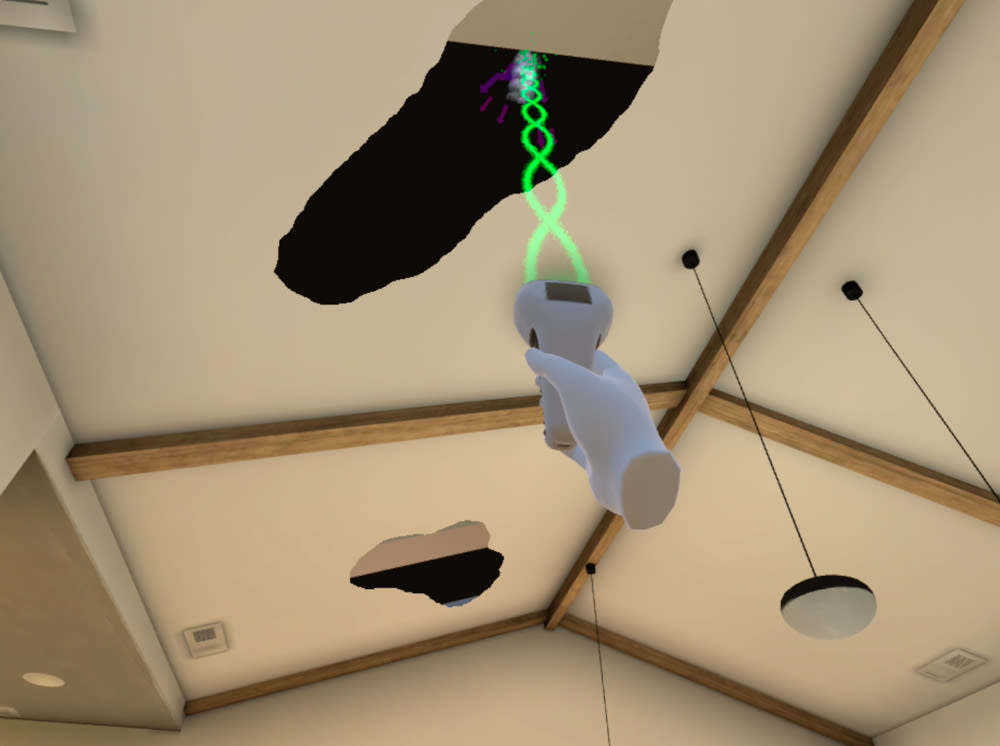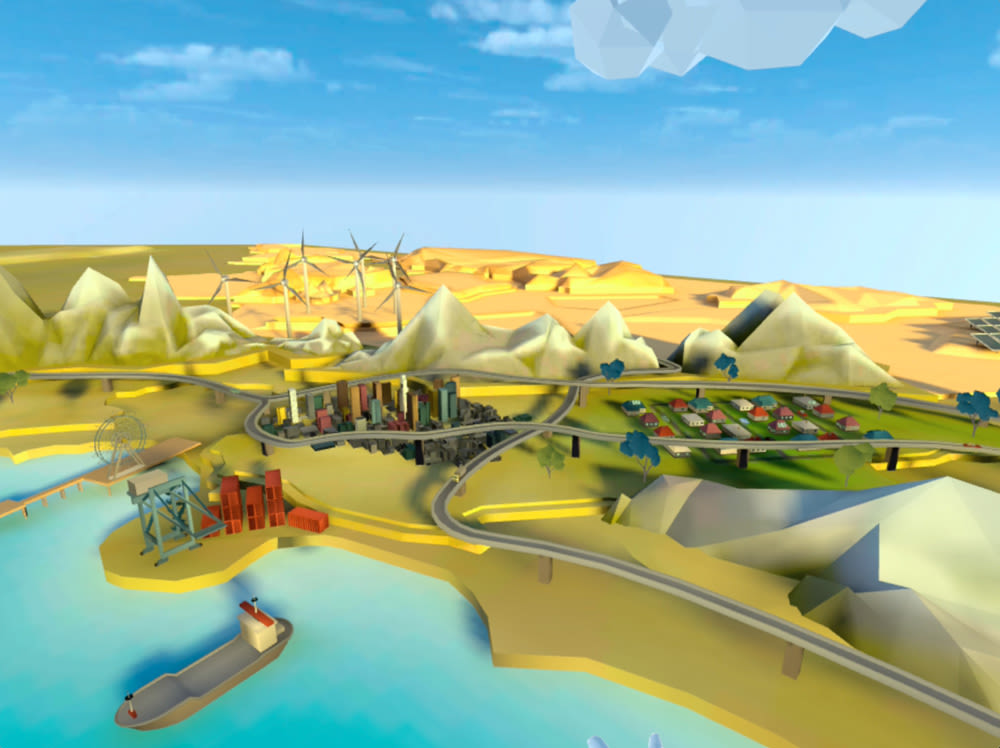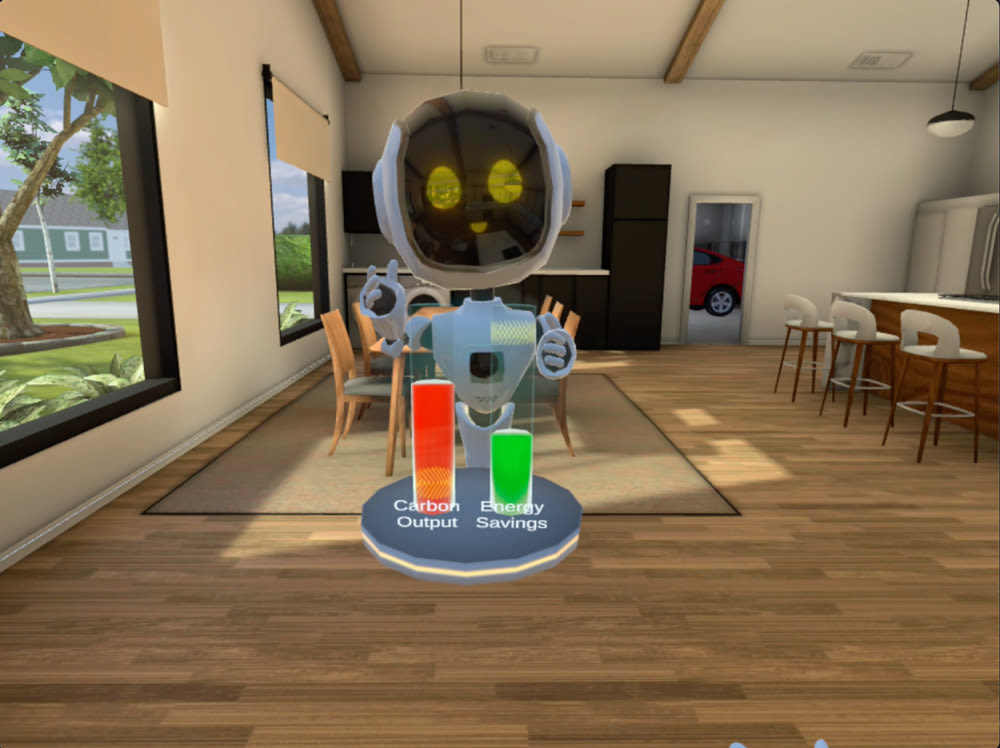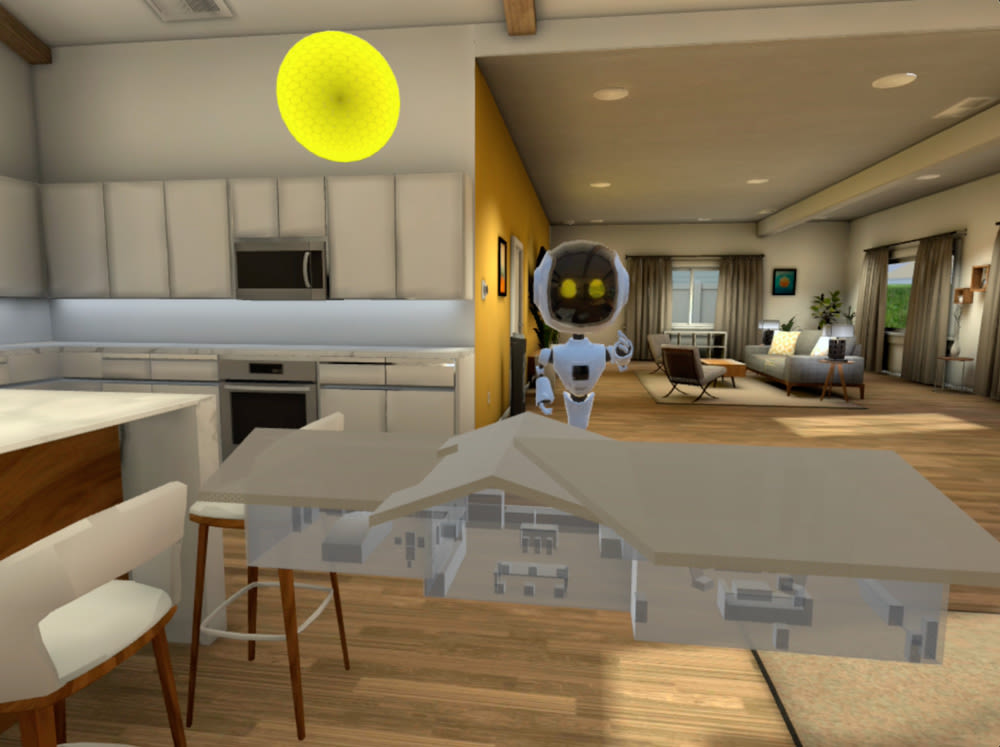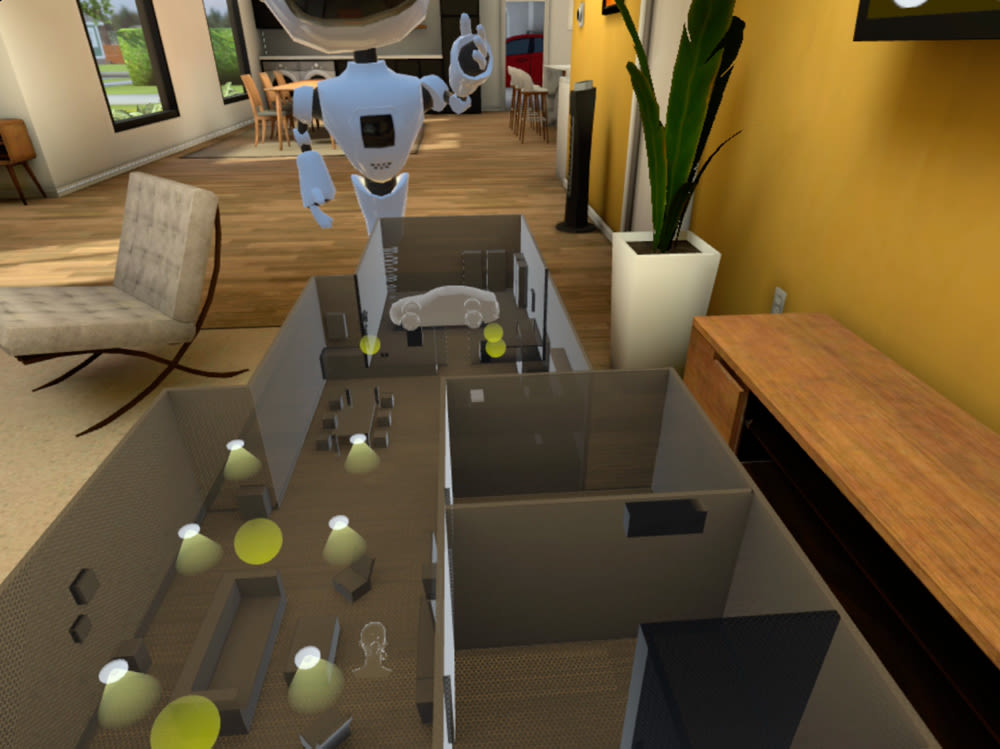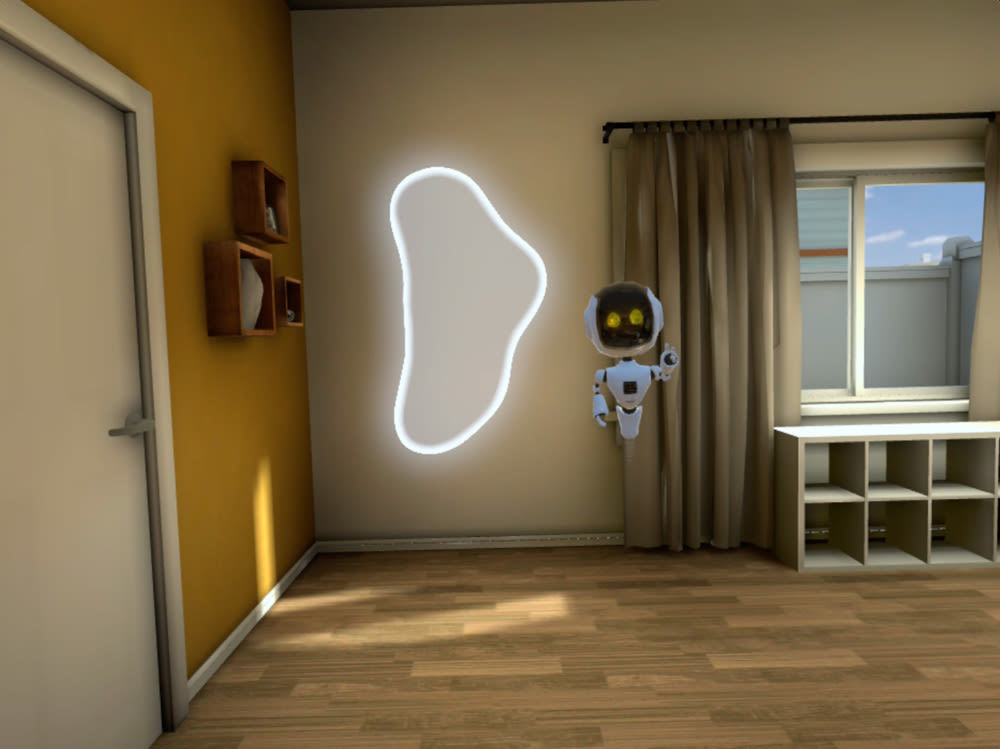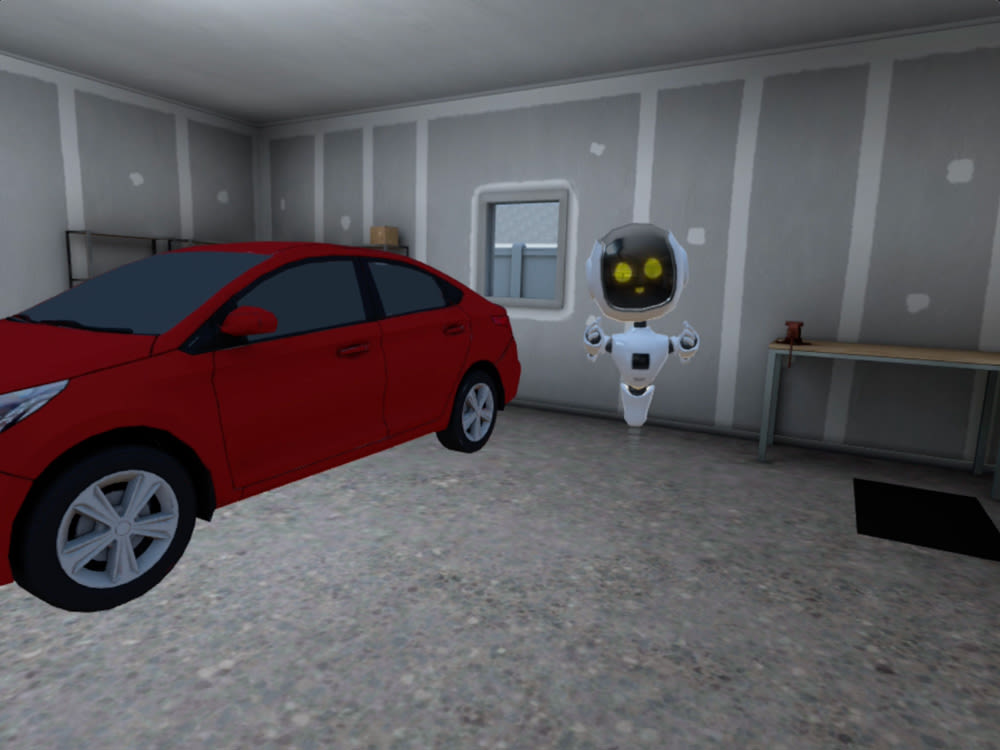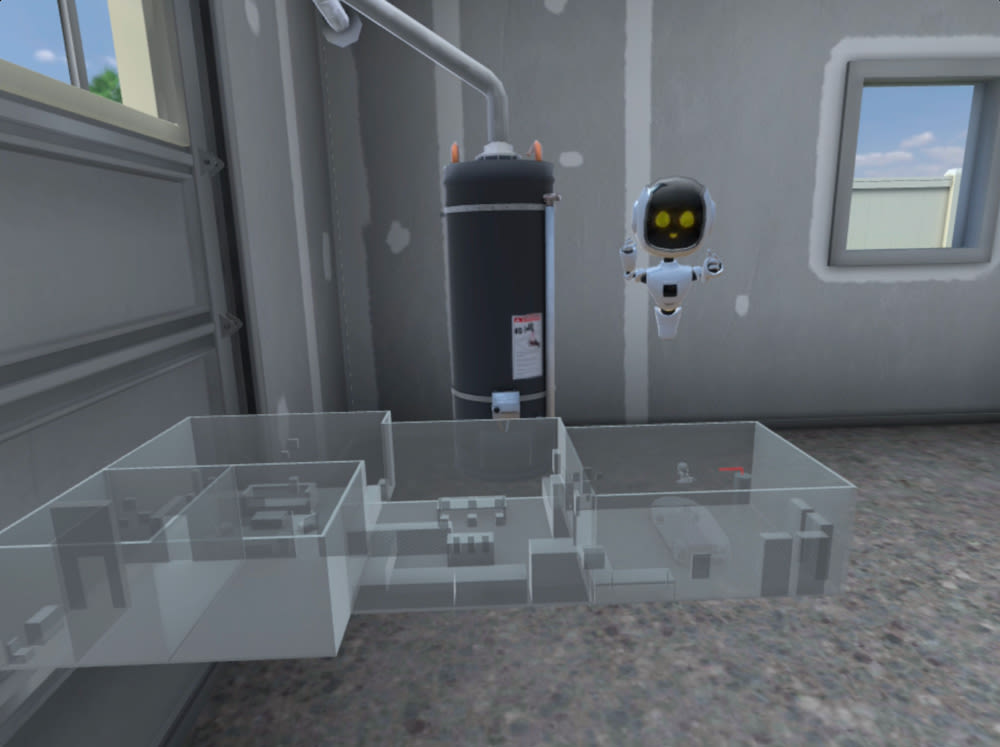
Client
Clean Energy Smart Home
Services
AR/VR
One of the largest electricity suppliers in the country is part of an ongoing initiative to help their state reach carbon neutrality by 2045. As part of this commitment to a “clean energy future,” they are constantly looking for new and innovative ways to educate individuals on how to personally contribute to cleaner energy.
The company asked CrossComm to build immersive virtual reality (VR) and augmented reality (AR) experiences that would allow users to see how simple changes in one’s home could have meaningful impacts on a single household’s carbon footprint.
Approach
CrossComm designed and built two apps for the electricity supply company that showcased the “Clean Energy Smart Home.”
The first app is a VR game experience built in the Unity game engine. CrossComm designed the experience as a modular learning tool, allowing users to perform various energy saving tasks around the home, such as installing carbon-free appliances. As a user makes changes, the decreased carbon output and increased energy savings are instantly reflected on visible carbon meters that are presented by a friendly personal robot assistant. The robot assistant also helps guide the user through each module.
Exterior shot of the Clean Energy Smart Home from within the VR app
The second application that CrossComm built is an AR version of the “Clean Energy Smart Home” that allows users to to use their mobile phone to see a miniature 3D model of the home in their real world environment. The AR version is geared towards users without access to a VR headset and allows them to experience many of the same educational modules.
User Experience
Designing the VR environment took special consideration. A major goal for the client was to use the VR tool at crowded trade show events. This meant that the primary audience would need to be relatively stationary, and perhaps even seated, when engaging with the experience.
In preparation for these physical limitations, the CrossComm team made it possible for users to use their controller to easily teleport within the VR home. CrossComm paid special attention to the proximity of objects in the virtual environment, making them close enough for the user to see and identify, but far enough to deter the user from physically approaching them so they would be encouraged to teleport instead.
Finally, the CrossComm team had to contend with the fact that many, if not most, of the app’s users would probably not be familiar with VR. Therefore, it was necessary to make the VR experience easy to digest and understand for even a one-time user.
To accomplish this, CrossComm used the robot assistant as a source of verbal instructions, explaining how and when to perform tasks. The robot’s instructions are also reinforced by visual cues. Finally, by keeping the number of overall buttons and controls limited, the CrossComm team made it easier for users to catch on and intuitively engage with their virtual environment.
Problem-Solving Complex VR Visuals and Interactions
CrossComm’s AR/VR app developers had the challenge of building some unique interactions within the experience. For example, a “grab-and-replace” feature allows users to reach into a miniature hologram of the house to swap out appliances. This, in turn, replaces the appliance in the life-sized simulation as well. For this mini house (and other models within the experience), CrossComm’s developers built custom shaders to create the holographic appearance.
Another element that required special detail was the electric car module. The client wanted to capture the specific experience of plugging in an electric car, citing evidence that electric car users often report a pleasing feeling when doing so. To add more realism to the experience, the CrossComm team paid close attention to the visual details. For example, the team utilized a rope physics plugin so that the cord of the wall charger would move in a realistic fashion as the user handled the nozzle.
Building For the Future
The modular approach taken by CrossComm allows for the easy adding or removing of modules in the VR app and its companion AR app. This will allow the client to customize the experience depending on their audience, and even to update the home by adding new modules or retiring old ones.
The CrossComm team also made the robot assistant’s mouth dynamically responsive to audio so that the timing and size of its mouth would change based on what it is saying, and how loud it is saying it. This live transcription of audio will allow the client to easily swap out audio files in the future or even accommodate different languages without needing to reprogram the robot assistant’s mouth movements.
Collaborating Remotely in XR
A CrossComm-developed framework called XR Connect was employed on this project to assist in better collaboration and feedback. This framework allows CrossComm to meet with clients in virtual reality as a 3D environment is being built—similar to how an architect might meet a client in a building as it is being constructed. This allowed representatives from the electricity supply company to tour the virtual space, discuss progress, and provide immediate and relevant design feedback to the CrossComm team based on real experience rather than 2D mockups.
Results
The Clean Energy Smart Home experience successfully launched in the Oculus Quest Store. The mobile AR companion app is available in the iOS and Google Play stores.
In addition to being publicly available, the client also intends to use the tool at trade shows and other events to engage attendees and prompt conversations about carbon neutrality and energy efficiency.
The VR and companion AR experience will be part of ongoing campaigns to help educate consumers on how to reduce their carbon footprint and contribute to greener approaches to energy consumption. Using engaging and experiential technology like virtual reality creates opportunities for the user to see how their actions directly impact outcomes. This will hopefully not only increase awareness, but also a sense of individual responsibility that will reinforce positive behavior.

